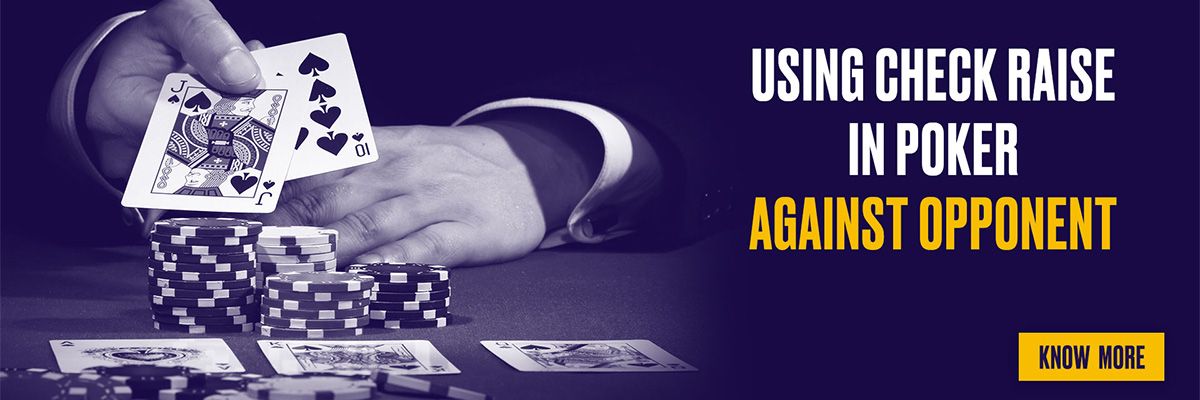So, you think you know poker? You’ve got your bluffs, your calls, and your raises down pat. But if you haven’t mastered the check raise, you’re leaving money on the table. Buckle up, because we’re diving into the quirkiest, sneakiest, and most psychologically thrilling move in poker: the check-raise.
What is a Check-Raise in Poker?
A check-raise is the classic bait-and-switch of poker. Imagine you’re a poker shark lurking in the deep waters of the felt. You check (pretend to be disinterested) on your turn, waiting for an unsuspecting opponent to bet.
Just when they think they’ve got the upper hand, BAM! You raise their bet, flipping the script and leaving them gasping for air. It’s a deceptive maneuver that can make or break your poker game.
Executing a check-raise is like setting a trap. Here’s how you do it:
1. Check: On your turn, simply pass the action to your opponent without betting.
2. Wait for the Bet: Let your opponent fall into the trap by betting.
3. Spring the Trap: When it comes back to you, raise their bet significantly. This unexpected move can throw your opponent off balance and force them to rethink their strategy.
Reasons to Check-Raise in Poker
Why go through all this trouble? Here’s why:
- Maximize Profits: When you have a strong hand, check-raising can build the pot quickly.
- Bluff Like a Pro: Use the check-raise bluff to represent a strong hand, even if you’re holding junk.
- Disrupt Opponent’s Flow: This move can mess with your opponent’s game plan, making them second-guess their decisions.
- Information Gathering: Check-raising can reveal a lot about your opponent’s hand strength based on their reaction.
Strategies to Check-Raise on the Opponent
Now that you know why to check-raise, let’s talk strategy:
- Know Your Opponent: Use check-raises against aggressive players who bet frequently. They’re more likely to fall into your trap.
- Position Matters: Execute this move when you’re in early position to increase its unpredictability.
- Mix It Up: Don’t become predictable. Sometimes check-raise with strong hands, other times with bluffs.
- Stack Sizes: Be aware of stack sizes. A successful check-raise often requires having enough chips to apply significant pressure.
Steps to Perform a Check-Raise
Breaking it down step-by-step:
1. Pre-Flop Considerations: Have a plan based on your hand and position.
2. Post-Flop Execution:
- Check when it’s your turn.
- Let the opponent bet.
- Raise their bet on your next opportunity.
3. Sizing the Raise: Make it substantial enough to create doubt but not so large that it scares them away (usually 2.5 to 3 times their bet).
Common Mistakes to Avoid
Even the best players make mistakes. Avoid these common pitfalls:
- Overuse: Don’t check-raise too often. It’s a powerful move but can lose its impact if overdone.
- Wrong Opponent: Using this move against tight players can backfire, as they might only bet with strong hands.
- Poor Timing: Don’t check-raise on dangerous boards that connect with a lot of potential hands.
- Inconsistent Betting: Keep your betting patterns consistent to avoid giving away your strategy.
Strategic Purpose of the Check-Raise
The check-raise isn’t just a fancy move; it’s a strategic weapon. Its primary purposes include:
- Building Bigger Pots: Force more chips into the pot when you have a strong hand.
- Pushing Out Draws: Make it expensive for opponents to chase draws.
- Manipulating Perception: Make your opponents think you have a monster hand, regardless of your actual holdings.
Psychological Aspect of Check-Raising
Poker isn’t just a game of cards; it’s a game of minds. The check-raise plays a critical role in psychological warfare. When you check-raise, you’re sending a message: “I know something you don’t.” This move can create doubt, fear, and hesitation in your opponents, leading them to make mistakes. The more you can get inside their heads, the more control you have over the game.
When Your Check-Raise Gets Called
Sometimes, despite your best efforts, your check-raise gets called. Don’t panic. Here’s what to do:
- Re-Evaluate: Assess the strength of your hand and the board texture.
- Plan Your Next Move: Decide whether to continue being aggressive or switch to a more defensive approach.
- Observe Opponent: Pay close attention to your opponent’s reactions and betting patterns for additional clues.
Play Poker on Spartan Poker App
Ready to put your check-raise skills to the test? There’s no better place than the Spartan Poker App. With a user-friendly interface and a wide range of games, it’s the perfect platform to refine your strategies and take your poker game to the next level. Download Poker App today and start mastering the art of the check-raise!
In conclusion, the check-raise is more than just a move; it’s a statement. It’s about asserting dominance, controlling the game, and outsmarting your opponents.
Whether you’re playing for fun or aiming to become a pro, mastering the check-raise can elevate your poker prowess to new heights. So, next time you’re at the table, remember these tips, set your trap, and watch your opponents fall right into it.
Happy raising!







